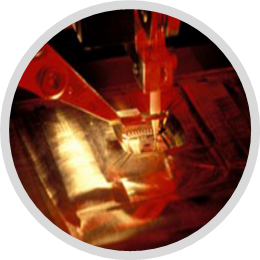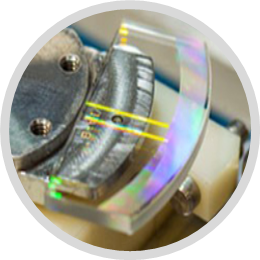Wire bonding is a demanding application that requires precise positioning, high accelerations and short settling times to lay out the desired wire path. MicroE’s Mercury II encoders offer high speed, noise immunity, durable cabling and resolutions to 1.2 nanometers in a small footprint.
The Challenge
As the high-tech sector continues to demand better, faster wire bonds, each new generation of wire bonder is also expected to accommodate an ever-smaller footprint on production floors. More than ever, wire bonds need to be placed closer together and with a more consistent and predictable three-dimensional wire path. Higher placement accuracy is also required due to smaller bond pad size and increased pad density in high end product.
The Solution
In order to achieve these ends, a wire bonder’s motion control system needs to have the best possible control of velocity, acceleration and the third order derivative of position (a.k.a. “jerk”), with high speed positioning, excellent repeatability and high resolution. The motion feedback encoders need to perform in a high electromagnetic interference (EMI) environment with good thermal stability, long cable flex life and high reliability. MicroE Mercury II encoder line provides cost effective solutions to system designers seeking either an analog or digital incremental encoder for their next generation wire bonders.
The Benefit
The Mercury II MII6000 digital encoders offer excellent options for those wire bonder designs requiring encoder interpolation external to the motion controller. These user-programmable encoders offer high speed, robust noise immunity, 1.2nm resolution and long cable life. They boast a ±20nm cyclical error on glass scales for even better velocity stability. A programmable input filter helps to eliminate the effects of high frequency noise in the encoders as well. Sensors are compatible with both linear scales and rotary gratings, and for partial-rotation requirements, MicroE provides arc segments of the rotary gratings for further minimize the system footprint.
Specifications
| Sensor Dimensions | 22.6 x 12.7 x 8.1 mm |
| Interface | Digital A-quad-B with index and limits |
| Grating Period | 20µm |
| System Resolution | 5µm to 1.2nm |
| Maximum Speed | 5 m/sec |
| Sensor Weight | 3g |
| Travel Required | Various linear, rotary and angles |













